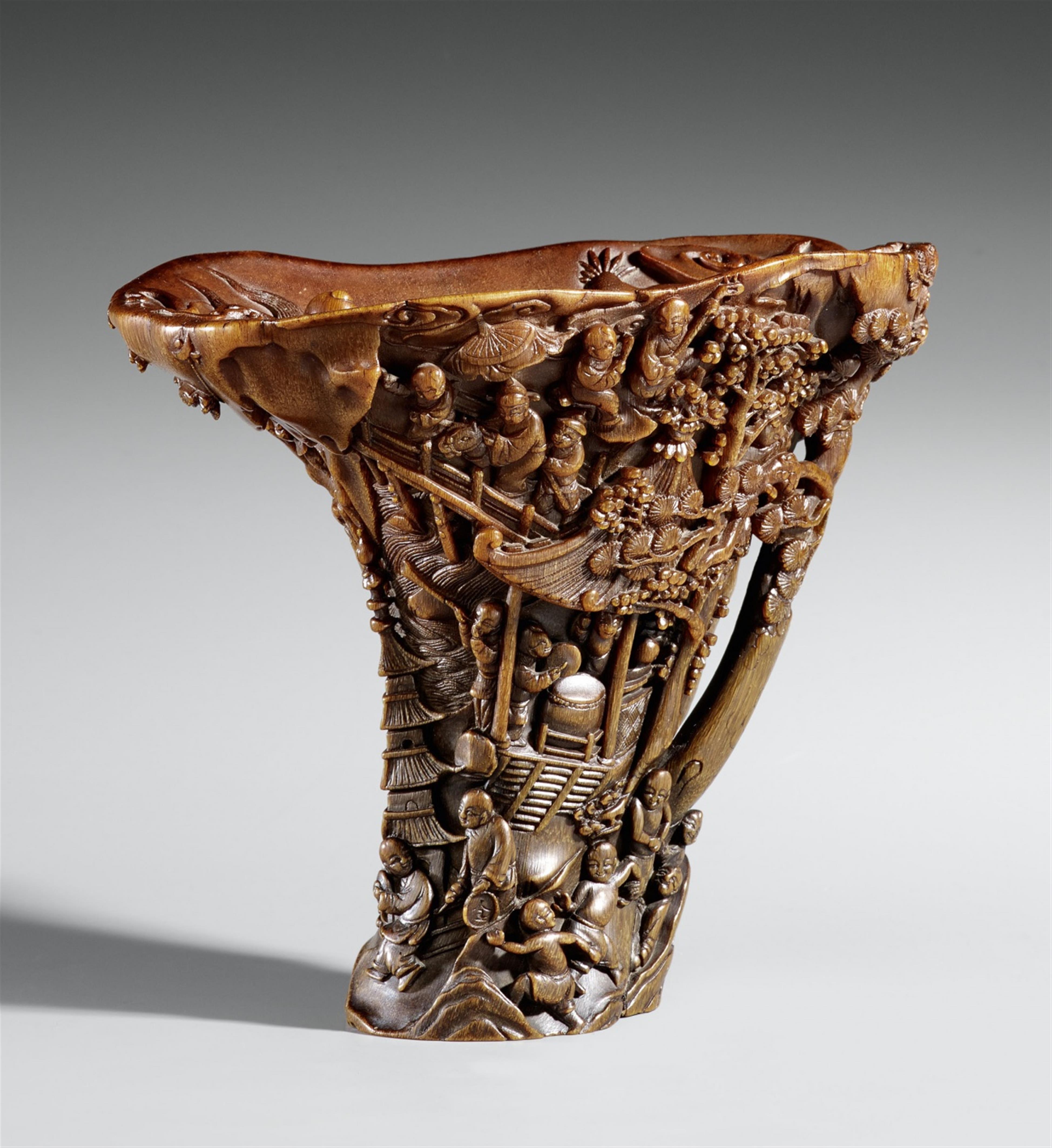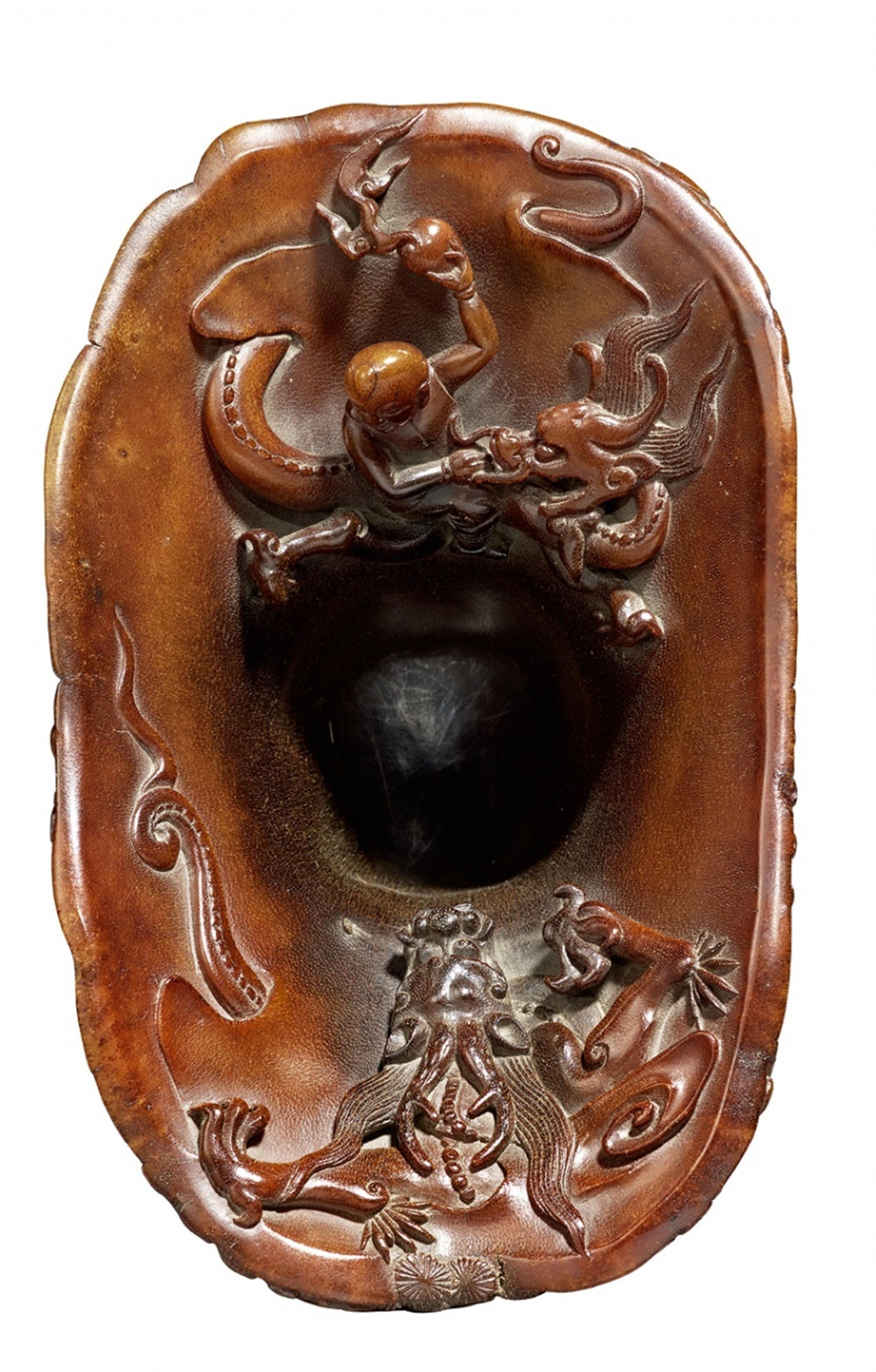Großer Nashornbecher. 17./18. Jh.
Von hoher Form mit trompetenförmiger Mündung, auf flachem, eingesetztem Boden. In kräftigem, wenig unterschnittenem Relief die Hundert Kinder bei verschiedenen Spielen und beim Musizieren in einer Landschaft mit Pagode, Laubbäumen und Kiefern, deren Stämme den Henkel bilden. Innen an der Mündung ein Drache bzw. ein Kind auf einem Drachen.
H 15,4 cm
The „Hundred Boys" and "boys at play" rhinoceros cups are rather rare. One such cup with the mark Shang Ming formerly in the Fowler Museum Collection in California was bought by T. Fok, and was sold through Christie's, Hong Kong, 31.5.2010, lot 1815, together with the rest of his collection. Another unsigned cup was auctioned at Sotheby's, New York, 20.3.2012, lot 199.
The present lot compares well with these two cups. It displays a happy group of boys playing, the children depicted however are larger than in the examples referenced. The unusual decoration of a boy riding a dragon on the inside compares to the rhinoceros horn cup sold at Sotheby's. The motif is summed up in the saying wangzi chenglong (hoping the son becomes a dragon). The dragon itself represents success in the imperial examinations.
The subject of the "Hundred Boys" originated in the arts of the Song dynasty and became quite popular in the decorative arts of the Ming and Qing dynasties such as porcelain and textiles. The motif is said to represent the 99 sons of Zhou Wenwang, the founder of the Zhou Dynasty. When he came across Lei Zhenzi, he adopted him, making the number of sons he had an even one hundred. They represent the blessing of many male descendants to ensure the continuation of the family line. The subject of the "boys at play" also typifies the Chinese desire for many sons.
清十七/十八世紀 犀角雕百子圖杯
來源:歐洲私人收藏
可比:《Connaisseurship of Rhinoceros Horn Carving in China》 香港 1999年, 第155號
Provenienz
Europäische Privatsammlung
Literaturhinweise
Vgl.: Thomas Fok, Connaisseurship of Rhinoceros Horn Carving in China, Hong Kong 1999, Nr. 155




